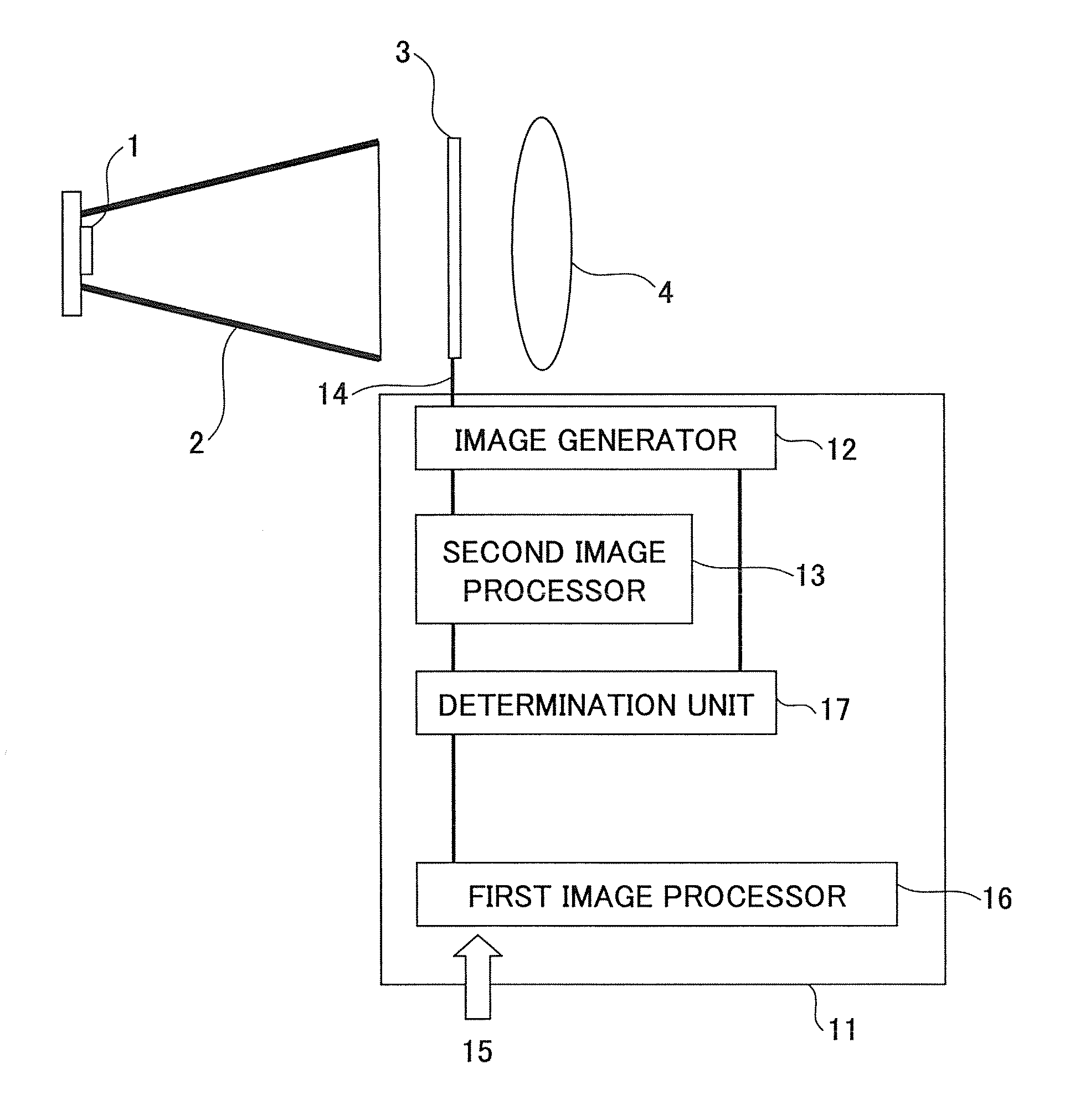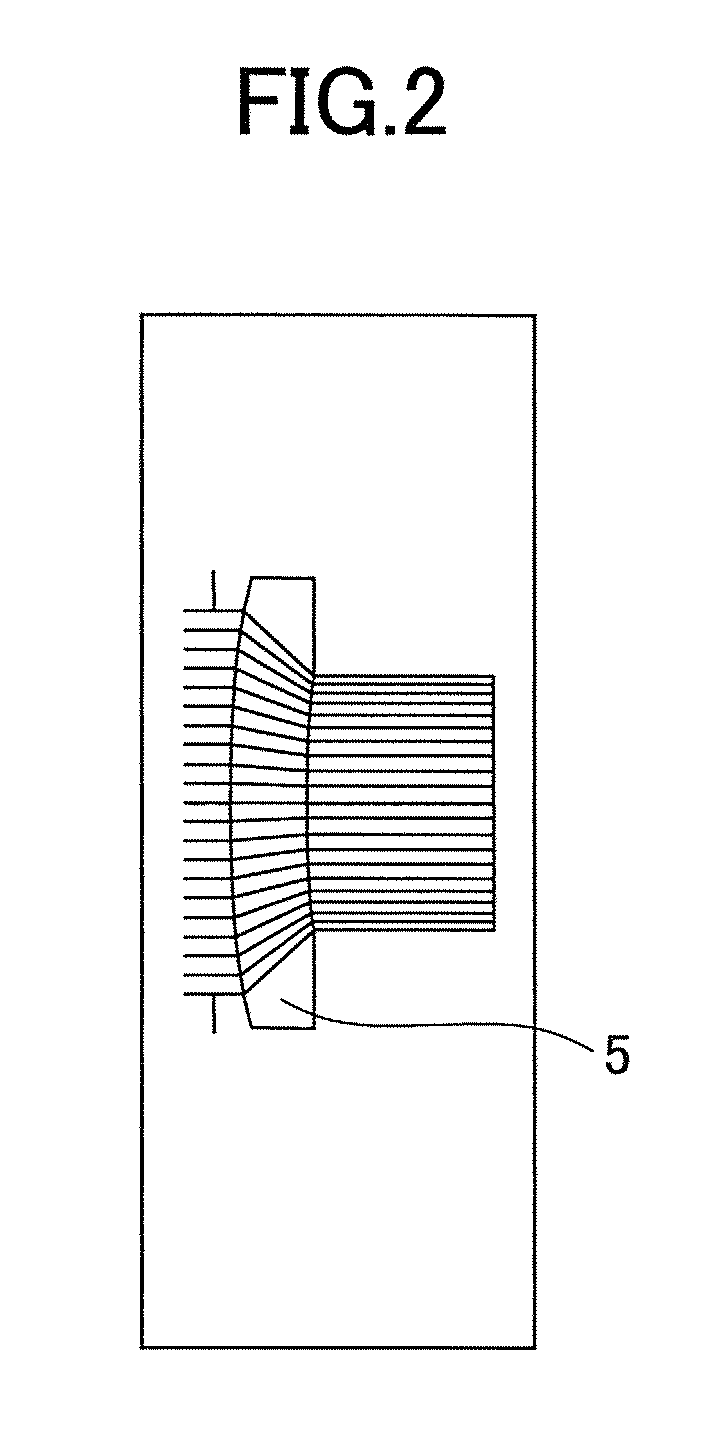Image projecting apparatus and image projecting method
a projecting apparatus and image technology, applied in the field of image projecting apparatus and image projecting method, can solve the problems of reducing resolution, affecting image quality, and affecting image quality,
- Summary
- Abstract
- Description
- Claims
- Application Information
AI Technical Summary
Benefits of technology
Problems solved by technology
Method used
Image
Examples
embodiment 1
[0043]FIG. 1 shows a diagram of an image projecting apparatus (“projector”) according to a first embodiment of the invention. The projector comprises a light source 1, a rod integrator 2, a liquid crystal light modulating device 3, and a projection lens 4. An image signal 14 carrying image information fed to the liquid crystal light modulating device 3 on an individual pixel region basis is supplied from an image processing device 11. The image processing device 11 comprises a first image processor 16, a determination unit 17, a second image processor 13, and an image generator 12. The image processing device 11 processes an original image 15, i.e., the externally entered image information, and outputs the image signal 14.
Light Source
[0044]The light source 1 is composed of plural light-emitting diodes (“LEDs”) that are arranged, e.g., two-dimensionally. The light source 1 is preferably configured such that the light-emitting portions of the LEDs are housed within the rod integrator ...
embodiment 2
[0054]In Embodiment 2, a projector is described that comprises a second image processor employing a different image processing method from the second image processor of Embodiment 1. The present embodiment provides an image projecting method and apparatus whereby, as in the foregoing Embodiment 1, a pixel region that is determined by the determination unit to contain image information that has overflowed or underflowed is subjected to image processing in the second image processor. Specifically, the second image processor substitutes an overflow or an underflow region with an upper limit or a lower limit of the representable range of the light modulating device. Based on the image information thus processed in the second image processor, the flux of light from the illumination optical system is modulated by the light modulating device. The modulated flux of light is projected by the projection optical system on a screen to form a projected image.
Second Image Processing
[0055]With ref...
embodiment 3
[0058]In Embodiment 3, the illumination optical system of the projector of Embodiment 1 is additionally provided with a device to control the distribution of light amount. The light-amount distribution controller may comprise a device to achieve a uniform light amount, such as the already-described rod integrator, which equalizes the distribution of light amount in a cross section perpendicular to the flux of light. Preferably, the illumination optical system also comprises, in addition to the aforementioned light-amount equalizer, a light-amount distribution converter for obtaining a light-amount distribution such that, in a cross section perpendicular to the flux of light, the light amount increases from the optical axis center toward the peripheral portion. One example of such a light-amount distribution converter is a light-amount distribution conversion element 5 shown in FIG. 2. Conventional illumination optical systems have been configured such that the light modulating devic...
PUM
 Login to View More
Login to View More Abstract
Description
Claims
Application Information
 Login to View More
Login to View More - R&D
- Intellectual Property
- Life Sciences
- Materials
- Tech Scout
- Unparalleled Data Quality
- Higher Quality Content
- 60% Fewer Hallucinations
Browse by: Latest US Patents, China's latest patents, Technical Efficacy Thesaurus, Application Domain, Technology Topic, Popular Technical Reports.
© 2025 PatSnap. All rights reserved.Legal|Privacy policy|Modern Slavery Act Transparency Statement|Sitemap|About US| Contact US: help@patsnap.com



